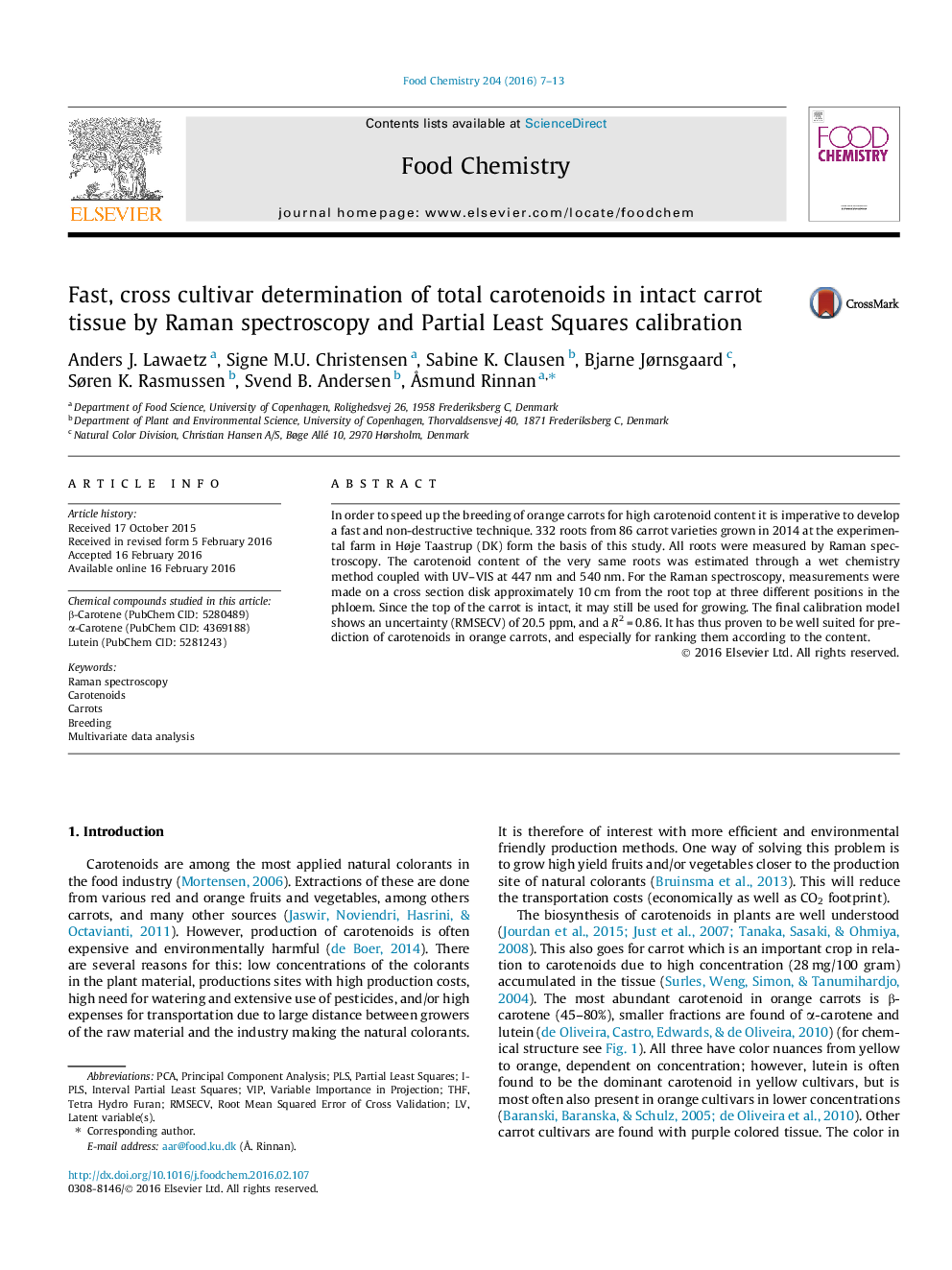| Article ID | Journal | Published Year | Pages | File Type |
|---|---|---|---|---|
| 7588775 | Food Chemistry | 2016 | 7 Pages |
Abstract
In order to speed up the breeding of orange carrots for high carotenoid content it is imperative to develop a fast and non-destructive technique. 332 roots from 86 carrot varieties grown in 2014 at the experimental farm in Høje Taastrup (DK) form the basis of this study. All roots were measured by Raman spectroscopy. The carotenoid content of the very same roots was estimated through a wet chemistry method coupled with UV-VIS at 447 nm and 540 nm. For the Raman spectroscopy, measurements were made on a cross section disk approximately 10 cm from the root top at three different positions in the phloem. Since the top of the carrot is intact, it may still be used for growing. The final calibration model shows an uncertainty (RMSECV) of 20.5 ppm, and a R2 = 0.86. It has thus proven to be well suited for prediction of carotenoids in orange carrots, and especially for ranking them according to the content.
Keywords
Related Topics
Physical Sciences and Engineering
Chemistry
Analytical Chemistry
Authors
Anders J. Lawaetz, Signe M.U. Christensen, Sabine K. Clausen, Bjarne Jørnsgaard, Søren K. Rasmussen, Svend B. Andersen, Ã
smund Rinnan,
